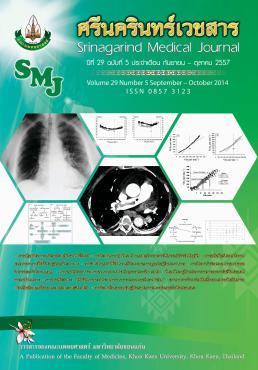Acute Pulmonary Embolism
Abstract
Acute pulmonary embolism (PE) is the third most common cardiovascular emergency condition; following acute myocardial infarction and acute stroke, which the mortality rate is still high. The most common etiology of acute PE is thromboembolism from deep vein thrombosis. An acute occlusion of pulmonary vascular bed leads to the increasing of right ventricular (RV) afterload, and resulting into RV dysfunction, alveolar gas exchange disturbance, and hemodynamics collapse, which may causes sudden death in affected patients. Diagnostic strategies include evaluation of clinical probability, clinical presentation, and disease- and severity-related investigations. Initial treatment is upon the hemodynamics compensation and RV function, aims to restore the pulmonary vascular patency and flow. Long-term treatment is upon the risk of recurrence, aims to prevent another episode. Careful evaluation of bleeding, which is the most concern complication of treatment, should be warranted in all individual patients and all steps of treatment.Downloads
How to Cite
1.
Pussadhamma B. Acute Pulmonary Embolism. SRIMEDJ [Internet]. 2014 Dec. 22 [cited 2024 Apr. 19];29(5):485-96. Available from: https://li01.tci-thaijo.org/index.php/SRIMEDJ/article/view/25926
Issue
Section
Review Articles



